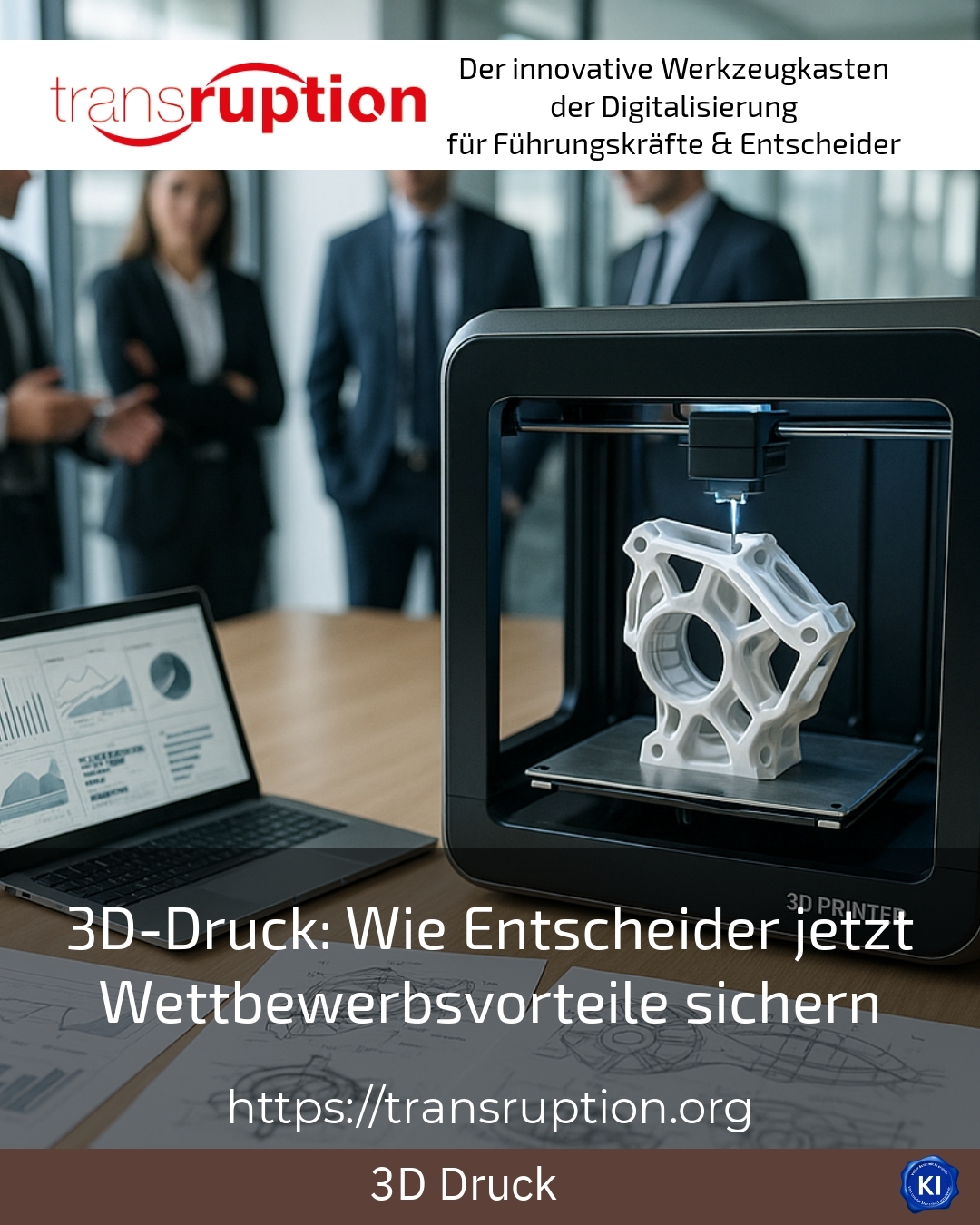In today's competitive environment, companies are always looking for innovative ways to stand out from the competition. One of the most effective technologies for achieving these goals is 3D printing. By integrating 3D printing technologies, companies can make their production processes more efficient, reduce costs and adapt flexibly to customer needs. This approach enables them to create real competitive advantages and strengthen their market position[1][2].
Flexibility and customisation through 3D printing
One of the most significant advantages of 3D printing is its ability to manufacture products and components exactly to customer specifications. This can be done in small quantities or even as individual items, which removes traditional manufacturing boundaries[1]. A good example of this is medical technology companies that use 3D printing to produce customised prostheses and implants. This specific customisation leads to a high level of customer satisfaction and enables companies to develop new business models[1].
3D printing also offers the opportunity to offer customised solutions in the consumer goods sector, such as jewellery or design objects. A family-run jewellery shop, for example, uses 3D printing to produce personalised jewellery. Customers can submit their own designs and buy small editions as limited collections, making the business a pioneer in the industry[2].
Cost efficiency and economic benefits of 3D printing
3D printing also offers companies considerable cost benefits. In particular, the production of small batch sizes without additional mould costs is a clear advantage. Companies with complex products or a high number of variants benefit in particular, as they can produce smaller batches without expensive moulds[2][3]. For example, companies in the aerospace industry use 3D printing to produce spare parts or prototypes directly and just-in-time, which reduces stock levels and increases flexibility[2].
Another example is a mechanical engineering company that has integrated 3D printers directly into the production line to produce spare parts and small batches to order. This leads to significantly lower warehousing costs, shorter delivery times and a more flexible service for customers[2].
Individualised solutions in 3D printing
A key advantage of 3D printing is the ability to create customised products. This capability enables companies to clearly differentiate themselves from the competition and occupy specific market niches. A good example of this is the production of customised jewellery or designer items, which are often offered as limited editions[2].
3D printing also offers considerable opportunities in the transport and logistics sector through the production of spare parts directly on site. This shortens delivery times and significantly reduces storage costs[1].
Integration of external expertise for 3D printing
For companies that want to integrate 3D printing into their business processes, working with external experts can be a sensible strategy. These can help with the successful implementation of projects if the necessary expertise is not available internally[6].
This allows companies to utilise the benefits of 3D printing without having to invest massively in internal development. This enables them to react quickly and efficiently to market requirements[6].
Successful business models through the use of 3D printing
Several companies are using 3D printing to open up new business areas or strengthen existing ones. For example, many companies see potential in the development of new customer groups through individualised products[8].
Overall, 3D printing offers companies a wide range of opportunities to differentiate themselves in the market and secure competitive advantages. By combining flexibility, cost efficiency and customisation, 3D printing can become a key to sustainable success[3][4].
My analysis
To summarise, 3D printing offers companies a wide range of opportunities to assert themselves in today's competitive environment. By integrating 3D printing technologies, companies can optimise their production processes, reduce costs and clearly stand out from the competition. The flexibility and customisation offered by 3D printing are decisive factors in securing competitive advantages and achieving long-term success.
Further links from the text above:
3D printing technology: How decision-makers can now compete...
3D printing: How managers are now gaining a competitive...
Advantages of 3D printing for small businesses
For more information and if you have any questions, please contact Contact us or read more blog posts on the topic TRANSRUPTION here.
















